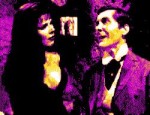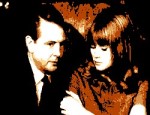Biography: life and films

Linder's real name was Gabriel Leuvielle. He was born on 16th December 1883 in Saint-Loubès, Gironde, in southwest France. When their winegrowing business failed, his parents placed him and his brother in the care of his grandmother so that they could seek their fortune in America. Leuvielle decided at an early age that he would be an actor, and so enrolled at the Bordeaux Conservatoire under the name Max Lacerda, although he was expelled before he could graduate. Adopting the stage name Linder (from the name of a shoe shop he came across in Bordeaux), he set off for Paris in 1904 to begin his stage career. The following year, he was recruited by the film studio Pathé to turn out short films as quickly and cheaply as possible, in the capacity of actor, director and screenwriter. His first film was La Première Sortie d'un collégien (1905) and he soon discovered that his real talents lay in burlesque comedy. Within a decade, Linder had made over 500 films, although the majority of these no longer exist.
1910 saw the first official appearance of Linder's famous screen alter ego, the ever-smiling, immaculately dressed young dandy Max, in Les Débuts de Max au cinéma. With his polished top hat, white spats and trim morning coat, Max was - like Chaplin's Tramp - readily identifiable by his silhouette and had a knack of getting himself into all manner of bizarre comedy escapades. One minute he would be fighting for his honour (Le Duel de Max), the next he would be torn between two equally desirable women (Max entre deux feux), or else he would simply get himself deliriously drunk (Max victime du quinquina) - on each occasion the adventure would end in disaster, often with a surprisingly anarchic twist. By 1910, thanks to Pathé's busy publicity department, Max Linder was the most famous film actor in the world, the first international film star.
But then came the First World War and the start of Linder's slow and painful decline into obscurity. Having sustained injuries whilst serving on the Western Front in 1914, Linder spent almost two years in convalescence. The experience of war left a deep and terrible scar - Linder would be plagued with depression and self doubt for the rest of his life. When he was finally well enough to work again, Linder accepted an offer from Essanay Studios in Chicago that was too good to turn down (five thousand dollars a week). Essanay hoped that Linder would fill the void left by Chaplin when he left, but it was not to be. As his health deteriorated, aggravated by the stress of working in a foreign country, Linder only managed to complete three of the twelve short films he had been contracted to make: Max Linder Goes to America, Max Wants a Divorce and Max in a Taxi.
A year after his return to France, Max Linder was well enough to resume his acting career and took the lead in Petit Café (1919), a film directed by Raymond Bernard. That same year, he opened the cinema in Paris that bears his name, Ciné Max Linder. With renewed optimism, Linder returned to America, determined to make his name in Hollywood. Here, he produced, directed and starred in three features - Seven Years Bad Luck (1921), Be My Wife (1921) and The Three Must-Get-Theres (1922) - but none of these achieved the success he had hoped for. As his health took a turn for the worse once more, Linder returned to Europe, his dreams of Hollywood success well and truly shattered.
Back in France, Linder met and fell instantly under the spell of the 16-year-old Heléne Peters. When the girl's mother refused to allow them to marry, the 40-year-old Linder whisked his teenage lover off to Monte Carlo. A scandal was narrowly avoided when Peters' mother sanctioned her marriage; the wedding took place in August 1923. Although the couple were very much in love, it was not to be the happiest of unions, as Linder , mindful of the difference in their ages, was continually anxious over his wife's fidelity.
What then ensued was one of the most unlikely collaborations in film history, between Linder and the young avant-garde filmmaker Abel Gance (who was just a few months away from embarking on his most celebrated film, Napoléon). Au secours! (1924) was an inspired comedy- horror two-reeler which exploited Linder's comic talents and Gance's flair for experimentation to the full.
Linder was back on form in his next film, Édouard-Émile Violet's Der Zirkuskönig (King of the Circus) (1925), and it appeared that the comedy giant was about to make a massive comeback. Tragically, it was to be another false dawn. Whilst preparing his next film, a super-production entitled Chevalier Barkas, Linder succumbed to a bout of depression that he was ill-equipped to deal with. His creative energies spent, his will to live extinguished, there was only one way out. On 31st October 1925, Max Linder and his wife killed themselves in a suicide pact by slashing their wrists in a hotel bedroom. The 41-year-old was survived by his 16-month old daughter, Maud Linder-Leuvielle, and was buried at the Catholic cemetery in his hometown of Saint-Loubès.
As Linder's star faded, others came to take its place. Charlie Chaplin, who learned so much from him and became a close friend, took the space that Linder had once occupied with such panache. As the great era of film comedy got underway in the late 1920s, early 1930s, that dapper little Frenchman in the top hat and ready smile was soon forgotten, a ghostly echo from that distant era when the rules of cinema were still being assembled and anything was possible. Fortunately, much of Linder's work has survived intact, and we can see for ourselves just why Max Linder was so popular in his lifetime. Watching one of his films for the first time is like entering an Aladdin's Cave, a vast trove of comedy treasures offering an inexhaustible supply of laughs, through that most universal of languages, slapstick.
© James Travers 2013
The above content is owned by frenchfilms.org and must not be copied.
Filmography
Click here to view complete list of films...The best of British film comedies

The very best of the French New Wave

The very best fantasy films in French cinema
